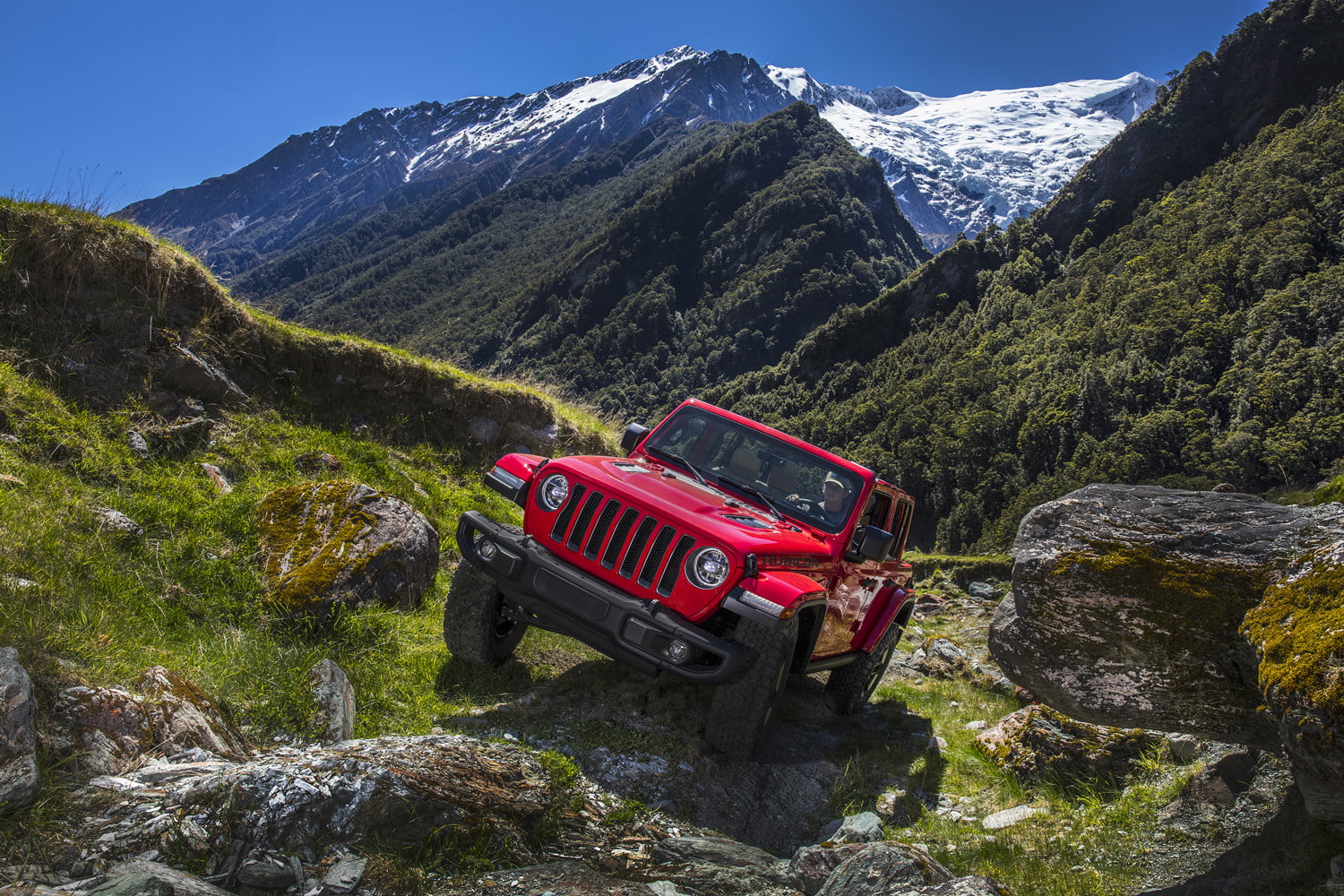Rocks, mud, water and the endless whitening of knuckles, off-roading is arguably among the most exciting driving pursuits out there. At the same time, there are many dangers to the activity, which many would say is part of what makes it so appealing. Without the element of danger, there’d be no rush of adrenaline, after all.
That doesn’t mean that off-roading has to be reckless. It’s good to tackle tough obstacles and take some risks, but not needlessly or without any kind of contingency in place. In today’s article, we’ll be offering tips and advice for aspiring off-road drivers to help keep you safe while experiencing the adventure that off-roading promises.
The Main Dangers in Off-Roading
First, we should understand just what kind of things can go wrong. It’s not hard to imagine, but let’s categorize and lay out the principal dangers.
1. Getting Stuck
This one is arguably the most common risk you take when off-roading. You can get stuck in myriad ways. For example, you might overestimate your vehicle’s elevation and approach angle, causing you to get caught atop some jagged rocks. You might also get mired in mud or attempt to traverse water that is deeper than your vehicle’s recommending wading depth. In any event, when you reach a point where you can no longer move, however you’ve done that, you’re stuck.
2. Breaking Down
Mechanical failure is another potential problem. When off-roading, though you are not travelling at high speeds like on the track, you are still maxing-out the vehicle’s other abilities, in particular torque and suspension. If a component wears down or is accidentally impacted, then it can result in mechanical failure that leaves you stranded in the middle of nowhere.
3. Collision
Another potential problem is accidental collision. This might happen with another vehicle in your off-road group, or with one of the many natural obstacles that you are attempting to avoid as you navigate your way through a particular trail. The most common obstacles drivers may collide with include rocks, trees and even large animals, but ultimately it depends on where you are off-roading.
4. Slips and Tumbles
Arguably the most frightening of the pitfalls is slippage or tumbling backward or sideways down a slope. When off-roading gets into steep slopes and rocky ridges, the risk of rolling, tumbling or worse increases. It most often happens when drivers overestimate the abilities of the particular vehicle they are driving.
5. Natural Disasters
From flooding and high winds, to earth tremors and mud slides, there’s seemingly no end to the list of potential disasters that nature can throw in your way to put a crimp in your off-roading plans. Those foolish enough to venture out even when public warnings have been put in place line themselves up for massive risk.
Safety Tips Before Off-Roading
A safe and secure off-road experience begins with completing a number of important tasks and thinking over some important considerations before you actually head out onto the trails.
Selecting an Off-Road-Ready Vehicle
There are a number of vehicles that come “off-road ready” right off the production line. Two notable and popular examples are the Jeep Wrangler and the Land Rover Defender. While both of these cars can be used on the road, they are built primarily with off-road use in mind. The Wrangler has long been held as a “go-to” for hobby off-road enthusiasts, and the Defender for farmers and others whose work often means driving around rough and rugged countryside.
To use the Jeep Wrangler as an example, the Rubicon model and trim is the one built most purely for off-roading, and it comes loaded with traction-boosting and torque-increasing features. These include (but are not limited to) multiple 4×4 systems, high ground clearance, massive air intake, sealed electronics to protect from moisture, precision steering and all-terrain tires. These are the kinds of features you need to focus on when choosing. One more consideration would be wading depth. The Jeep Wrangler manages about 19 inches of water safely, but the Land Rover Defender can handle around 35 inches. Avail yourself of these features and key statistics and compare them to the areas in which you wish to off-road.
Modifying an Existing Vehicle
Perhaps you already own a vehicle that you wish to take off-road. This is somewhat more complex than purchasing a ready-made model, but overall can work out to be cheaper. The other advantage of this approach is being able to tailor capability and safety features to suit your exact needs in a way that a factory-made model can’t guarantee. Focus your efforts on ground clearance, braking, suspension and tire traction at first. These are the most essential areas to get right. Next you have to look at bumpers and other protective panels, especially the approach angle they can give you to make it easier to traverse uneven terrain.
On top of that, you might also look at additional lighting, storage and tools like winches to make your vehicle truly ready for anything. You should consult with experienced off-roaders and/or a professional mechanic before you declare your vehicle as ready to go. This brings us neatly to the next piece of advice.
Join an Off-Road Club
Thanks to the advent of social media, it’s never been easier to find local clubs and societies that share your interest in off-roading. The benefit to joining such a club is two-fold. First and foremost, you can get expert advice from experienced off-roaders who know the local trails and obstacles well. On top of that, you can instantly find other individuals or groups with whom to go out off-roading together. This is not a sport that you want to do alone (see below for more details).
Inspect Your Off-Road Vehicle
You should ensure that everything is in order with your vehicle before you go out on any journey. This doesn’t just include the first time, but rather every single time that you head to the off-road trails: tire tread and inflation, seatbelts for driver and all passengers, brakes, suspension, lights, 4WD etc. Everything has to be working properly.
One other critical component is your sway bar. While you’re travelling on-road to your off-roading location, the sway bar disconnects need to be connected and locked in place. You must only disconnect them when you have arrived at your off-road trail and are getting ready to set off. After you’re done, they need to be reconnected and locked before getting back onto the public highway.
Finally, don’t forget to check your fluid levels before you set off, especially those in your radiator. Though you won’t be travelling at speed, the engine will still undergo a great deal of stress. Coolant levels need to be in line with your manufacturer recommendations, as do windshield washer levels. Carry an extra supply of windshield washer fluid, too. You never know how much you might use in a single day. It’s better to have extra and not need it than the other way around.
If you know your way around the vehicle, you can perform these checks yourself, but you can also ask those in your group to help you out to make sure everything is in order.
Safety Tips While Off-Roading
Following the above advice will help you safely begin your off-road adventures, but there are more things to consider as you set off down the trail.
Don’t Off-Road Alone
Whether you travel with a pack of other cars, just one other, or with a co-pilot in your car, it’s always good to have someone with you. If you off-road alone, then there is no one there to help you if and when things go wrong. A second car can help winch you out of a mire; a co-pilot can help establish and maintain a safe driving line, as well as spot certain hazards that you might miss while you are laser-focused on the obstacle in front of you.
In worst-case scenarios, additional drivers with you on the trail means there will be someone to either call or head back to find help in the event of a serious accident while off-roading. This is of paramount importance.
Drive Within Your Limits
One of the biggest causes of safety problems when off-roading is drivers who exceed the limits of their vehicle. Before you set off, we advised that you understand your vehicle’s capabilities well. You need to know the ground clearance, approach angle, wading depth, tire tread, 4×4 functions and other features of the vehicle extremely well, and then stick within those limits while driving.
Your off-road vehicle remains an inanimate object without the spirit or will to exceed its pre-set parameters. You can’t expect the vehicle to magically become more capable just because you personally have the will to overcome that rock face in front of you. Stick to the given parameters, and you’ll enjoy the experience more.
Backtrack If You Need To
Following on from the above, it’s critical that when driving you remember to stop the vehicle and backtrack if it becomes necessary. It is not a defeat to encounter something that your vehicle is physically incapable of overcoming. For instance, if you approach muddy ground that has been worsened by morning rain, and you know that your tires are not up to this challenge, then find an alternative route. Getting stuck in the ground and having to be winched out is a waste of time and energy.
Being too proud or too stubborn to let go and backtrack to find a different route is one of the biggest causes of prideful drivers getting stuck and requiring outside help, including mountain rescue services. Some things are beyond your control, and it’s okay to turn around.
Having said that, there are occasions when pressing on in a straight line can be beneficial. For example, when driving on sand, preparing the vehicle by lowering the tire pressure will help, but there may still be tricky dunes or obstacles to overcome. In these cases, sticking to your straight line is safer than attempting to turn away from the obstacle. If you feel it is defeating you, heading straight back is the safest option.
Cross Water in the Morning
Fording water can be a risky undertaking, especially if you’re in an area with melting seasonal snows. The first thing to remember is never to attempt to ford a stream or river that you can reasonably assume will be even a little bit deeper than your maximum wading depth. Those who maintain and manage the trails should be able to inform you of the depth of any natural water obstacles that lie in the way and the safest places to cross.
One important thing to consider is the time of day that attempt any fording. If you are dealing with melting snows, then morning time is the best period to ford a stream or river. The reason for this is that during the morning, temperatures are still lower and therefore the stream won’t be swollen by the melted snow. That changes by lunchtime and the afternoon.
Don’t Obstruct Others
As you traverse the various trails and obstacles, it’s natural that you’ll want to pull over somewhere to stop for lunch or just to take in the views and get some photographs. All this is well and good, but ensure that you pull over into a safe place for yourself, but as importantly somewhere that won’t be an obstruction to other trail users.
Creating a blockage of any kind can be dangerous as others may attempt to leave the trail to navigate around you. It may also result in a collision should you stop somewhere with poor visibility, giving another driver little warning time before they are forced to stop. For these reasons and more, ensure you pull over in a safe and non-obstructive location.
Stick to Designated Trails
Just as skiers are tempted to go off-piste to find their own adventures, off-roaders also feel it is their right to simply wander and explore the wildest-possible terrain. Depending on where you are, this can be problematic for several reasons. First and foremost is safety, because the wilder the area, the less it is set up and managed to be safe for off-roaders. There could be loose rocks, unstable ground, impassable terrain or worse.
Another key reason is local wildlife. Trails are often set up in such a way that you can enjoy the natural surroundings without disturbing the habitats of nearby animals. Taking the vehicle into the wild increases your chances of such disturbance, or even collision or dangerous encounter with animals protecting their young. It’s always best to stick to the designated trail.
Increased Safety Doesn’t Mean Decreased Adventure
We hope that you found today’s article informative and useful. The point of safety tips like these isn’t to detract from the fun or adventure of your off-roading trip. The idea is to keep you safe so that you can enjoy the off-road adventure for longer. Don’t listen to the myths that off-roading has to be as dangerous as possible in order to be authentic. Safe if fun, and fun is lasting. Enjoy your off-road adventures!



